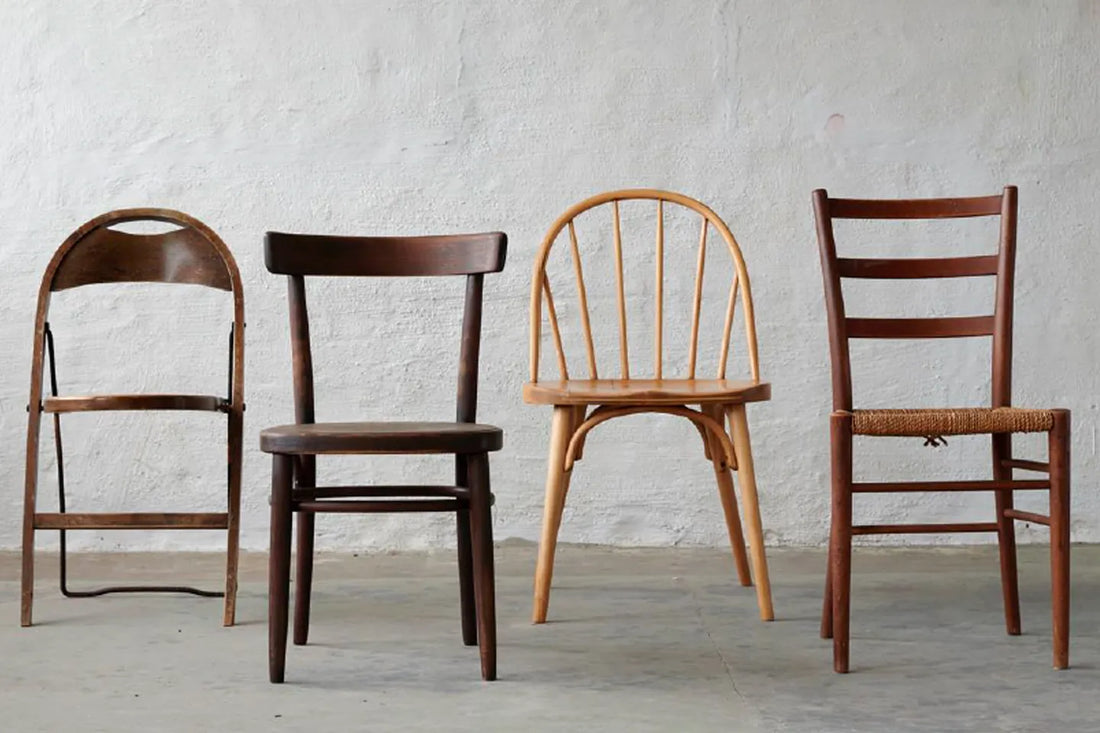
4 min read
Gemla Fabrikers: Sweden’s Oldest Furniture Manufacturer
WLLW was granted an insider’s view of Gemla Fabrikers’ factory, where centuries-old techniques and a commitment to sustainability converge, crafting timeless furniture that marries tradition with longevity.
WORDS Will Higginbotham
“In Swedish, we have a term called hållbar,” says Benny Hermansson, owner and current CEO of Gemla Fabrikers. This word merges the concepts of durability and sustainability. Whether crafting a classic or a modern piece, “that’s what ensures the product remains relevant because you’ll want to keep it in your life.”
At Gemla, the legacy of Sweden’s oldest furniture manufacturer is shaped by its commitment to enduring quality and responsible production. Transforming wood into artful furniture is an endeavor of precision and gentleness, mastered through the hands of artisans over generations. Nestled in the lush forests of Småland, the Gemla factory stands as a testament to 164 years of Scandinavian design and craftsmanship. WLLW was fortunate enough to gain insight into their methods, where the age-old technique of steam bending wood into furniture was on full display.

Gemla’s factory floor, located within the forest of Småland, Sweden. Photo courtesy of Gemla
“It’s about finesse mostly, and the right application of strength. Once you get the hang of it it’s quite repetitive.” First they carefully select the wood – primarily beech and ash, which are known for their flexibility and strength. The wood is then steamed at high temperatures to make it pliable, allowing for it to be bent into the desired shape. This is a delicate process, as the wood must be bent while it is still hot and any misstep can result in cracks or breaks. Once bent, the wood is clamped into a mold and left to dry, solidifying its new shape. Finally, the wood undergoes the finishing touches, including sanding and the application of hard wax oil, stains and water based lacquer.

Gemla chair collection 1949-1969. Photo courtesy of Gemla
 |
 |
Craftsmen in the Gemla factory. Photo courtesy of Gemla |
Handmaking Gemla furniture. Photo courtesy of Gemla |

Gemla uses horsehair, latex and wool felt to upholster their furniture. Photo courtesy of Gemla
Gemla was originally established in 1861, when it was known as Gemla Leksaksfabrik, a toy making business in Stockholm. They specialized in rocking horses, building blocks, bocce game sets and abaci. Production later shifted to Småland and the company began focusing exclusively on furniture. Today, the factory’s signature pieces are its Viennese bentwood chairs, first produced in 1901. These chairs are lightweight and beautifully crafted, embodying the sophisticated simplicity associated with Scandinavian design. “They’re delightful pieces,” Hermansson says. “There is a reason they’ve stood the design test of time.”
“It’s about doing things the right way from design to manufacturing, so they’ll last.”
Benny Hermansson
Adhering to traditional wood bending techniques is a process that inherently minimizes waste and reduces environmental impact, while the wood is FSC-certified and sourced from ethically-managed forests. The upholstery is devoid of chemicals – using Swedish vegetable tanned leather and natural textiles, horsehair, latex and wool felt. “It’s about doing things the right way from design to manufacturing, so they’ll last,” Hermansson says. The company also runs a restoration program dedicated to the careful rejuvenation of their classic pieces. The program means that beloved furniture endures and that the brand continues to evolve.

Gemla chair collection 2012-2013. Photo courtesy of Gemla
 |
 |
COLLAGE chair designed by Swedish design studio Front in 2013. Photo courtesy of Gemla |
VILDA 5 designed by Jonas Bohlin in 2012. Photo courtesy of Gemla |
Historical partnerships, like the one with Swedish architect Gunnar Asplund in 1930 that produced one of the company’s first bentwood chairs, set the stage for ongoing innovation, including the Cattelin chair by architect Axel Kandell in 1948 and Sonna Rosén’s award-winning Solfjädern chair in 1952. “We’ve done a lot to keep that manufacturer-designer relationship alive,” Hermansson explains to WLLW. “It’s become a vital part of our business and something that sets us apart as much as the wood bending.”
This philosophy is embodied in recent designs such as the Nordic chair designed by Danish-Finnish duo Sami Kallio and Jakob Thau, and the GEMYT armchair, a homage to the 1960s, revealed at the Milan furniture fair. Hermansson acknowledges, “we can't repeat ourselves endlessly.” By continuously crafting furniture that blends Scandinavian design, sustainability, and longevity, Gemla not only honors its rich heritage but also acts as a canvas for future classics, symbolizing a harmonious blend of enduring tradition and inventive thinking.

Sonna Rosén's Solfjädern chair designed in 1948. Photo courtesy of Gemla
 |
 |
GEMYT armchair designed by Sami Kallio 2024. Photo courtesy of Gemla |
The Nordic chair designed by duo Sami Kallio & Jakob Thau 2018. Photo courtesy of Gemla |
 |
 |
CATTELIN is designed by Axel Kandell 1948. Photo courtesy of Gemla |
ZINC bar stool designed by Mathieu Gustafsson 2024. Photo courtesy of Gemla |

VILDA bench designed by Jonas Bohlin in 2013, upholstered with natural hairlok and wool. Photo courtesy of Gemla
Photography: courtesy of Gemla Fabrikers


